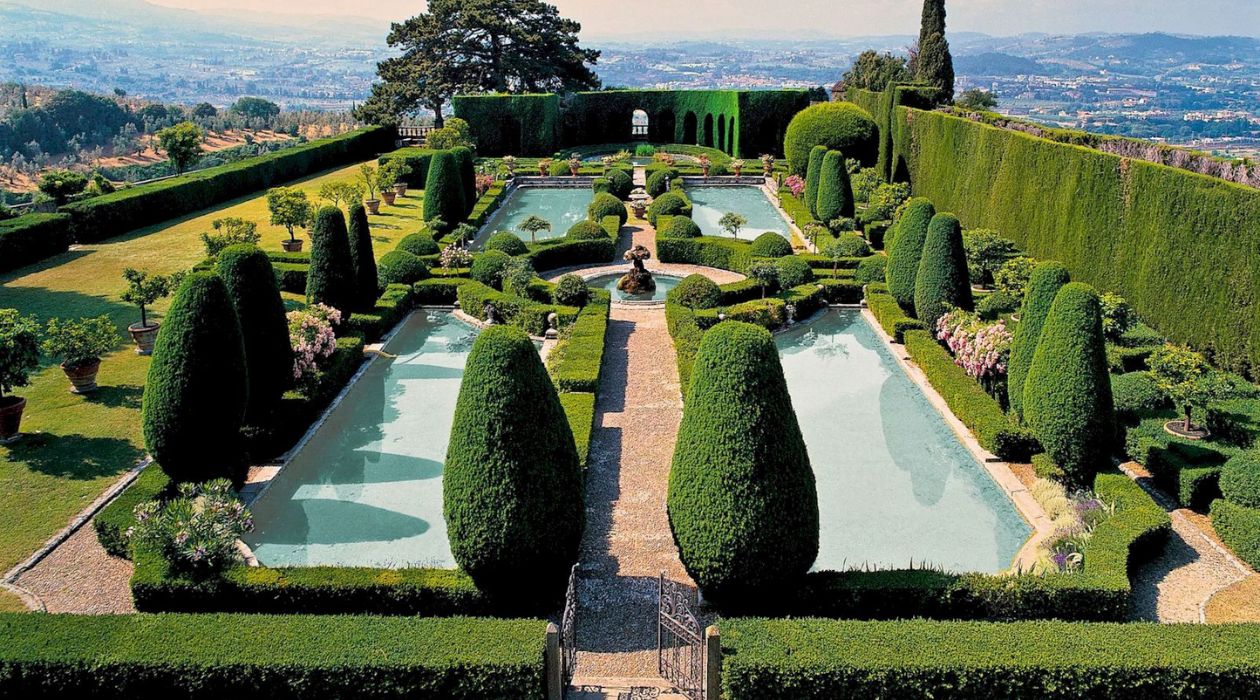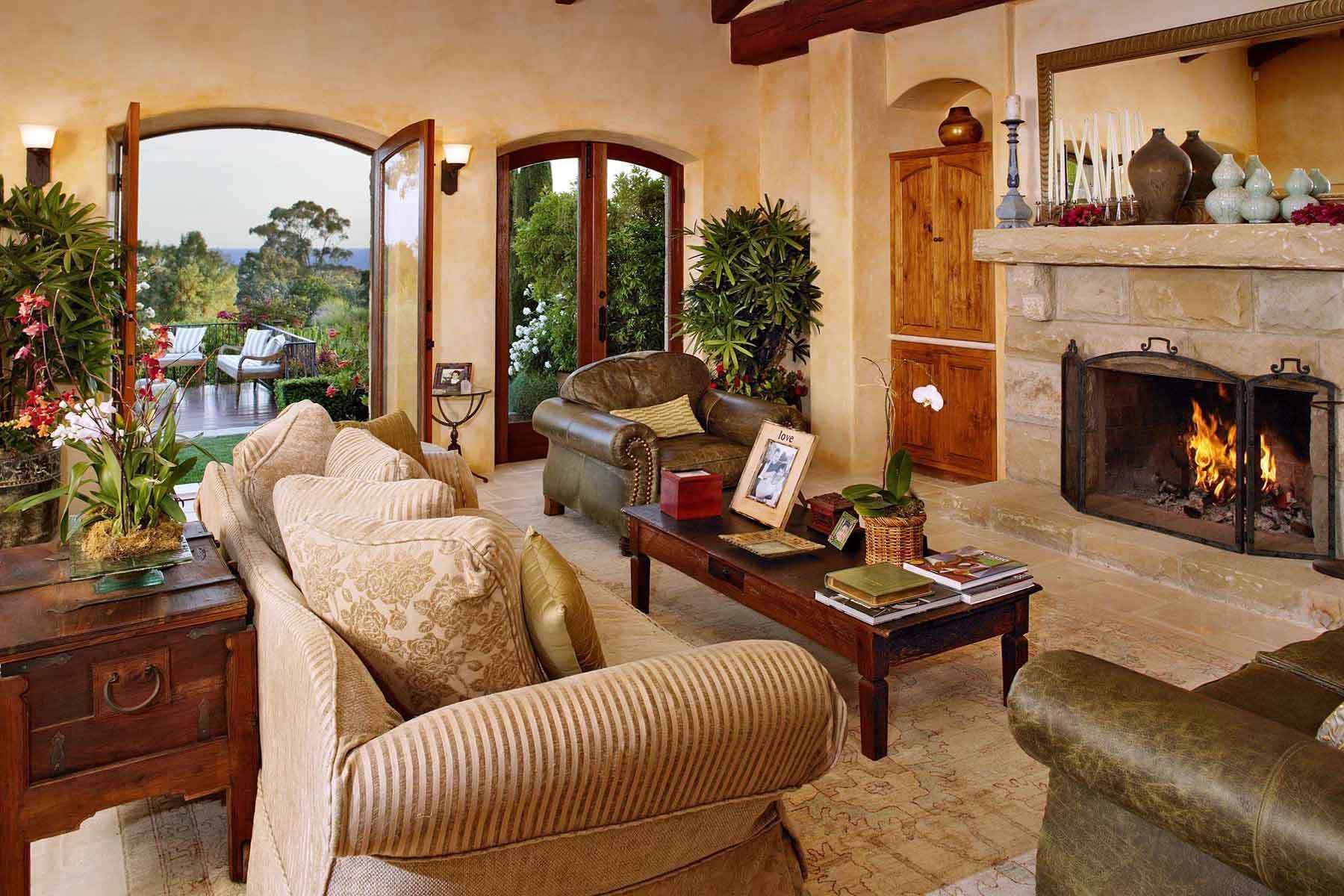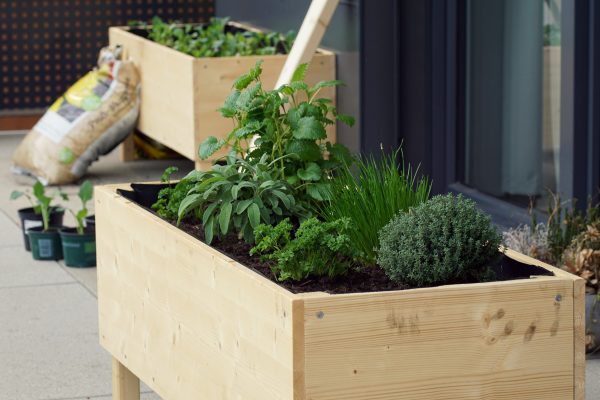Home>Garden Essentials>Garden Storage>This Tuscan Garden Is A Vision Of Beauty – Homes & Gardens


Garden Storage
This Tuscan Garden Is A Vision Of Beauty – Homes & Gardens
Modified: February 12, 2024
Discover the captivating charm of this Tuscan garden, a true vision of beauty. Explore its stunning designs and find clever storage solutions for your own outdoor oasis.
(Many of the links in this article redirect to a specific reviewed product. Your purchase of these products through affiliate links helps to generate commission for Storables.com, at no extra cost. Learn more)
Introduction
Welcome to the enchanting world of Tuscan gardens, where timeless beauty and natural elegance combine to create a truly captivating outdoor space. Inspired by the picturesque landscapes of Tuscany, these gardens are renowned for their rustic charm, vibrant colors, and harmonious design.
When stepping into a Tuscan garden, you are instantly greeted by a sense of tranquility and serenity. Every element, from the meticulously chosen plants to the charming stone pathways, tells a story of harmony with nature. Whether you have a sprawling estate or a cozy backyard, incorporating elements of a Tuscan garden can transform your outdoor space into a vision of beauty.
In this article, we will explore the key design elements and plant selection that define a Tuscan garden, as well as tips on adding water features and rustic structures. We will also share maintenance tips to ensure your Tuscan garden remains vibrant and thriving all year round.
So, grab a cup of coffee, sit back, and let us transport you to the idyllic landscapes of Tuscany as we embark on a journey through the magical world of Tuscan gardens.
Key Takeaways:
- Embrace the timeless elegance of Tuscany by incorporating terracotta, stone, and Mediterranean-style architecture into your garden, creating a harmonious and inviting outdoor space that reflects the beauty of the Italian countryside.
- Transport yourself to the idyllic landscapes of Tuscany with a Tuscan garden featuring olive trees, cypress trees, lavender, and citrus, complemented by water features, rustic structures, and regular maintenance for a vibrant and captivating oasis.
Read more: How To Fix E2 Error In A Washing Machine
Inspiration behind the Tuscan Garden
The Tuscan garden draws its inspiration from the beautiful landscapes of Tuscany, a region in Italy known for its rolling hills, vineyards, and charming countryside. The design of these gardens is deeply rooted in the rich history and cultural heritage of the region.
One of the key inspirations behind the Tuscan garden is the concept of “La Dolce Vita” – the sweet life. Tuscan gardens aim to recreate the relaxed and joyful ambience that is synonymous with the Italian way of life. They are designed to be inviting and welcoming, encouraging people to slow down, unwind, and enjoy the beauty of nature.
Another significant influence on Tuscan gardens is the traditional agrarian lifestyle of Tuscany. In the past, gardens in Tuscany were not just ornamental spaces but also functional areas where fruits, vegetables, and herbs were grown. This practical approach to gardening is still reflected in the design elements of Tuscan gardens today.
The architecture and art of Tuscany also play a major role in shaping the aesthetic of Tuscan gardens. The region is known for its rustic farmhouses, ancient castles, and Renaissance architecture. These structures often feature natural materials such as stone, wood, and terracotta, which are incorporated into the design of Tuscan gardens to create an authentic and harmonious atmosphere.
Moreover, the art and sculptures of Tuscany, particularly those from the Renaissance period, inspire the artistic elements found in Tuscan gardens. From elegant statues and intricately designed fountains to sculpted topiaries and ornamental urns, these artistic elements add a touch of sophistication and grace to the garden landscape.
Overall, the Tuscan garden draws inspiration from the beauty of nature and the rich cultural heritage of Tuscany. By incorporating elements of the agrarian lifestyle, architectural influences, and artistic expressions, these gardens evoke a sense of timeless beauty and create a space where one can truly experience the magic of Tuscany.
Design Elements of the Tuscan Garden
The design elements of a Tuscan garden are carefully crafted to create a harmonious and inviting outdoor space that reflects the beauty and charm of Tuscany. These design principles focus on creating a balance between functionality and aesthetics, while incorporating natural materials and traditional elements. Here are some key design elements that define the Tuscan garden:
- Terracotta and Stone: One of the defining features of a Tuscan garden is the use of natural materials such as terracotta and stone. Terracotta pots, planters, and accents are commonly used to add rustic charm and warmth to the garden. Stone pathways, walls, and borders not only provide structure but also lend a sense of permanence and timelessness.
- Mediterranean-style Architecture: Tuscan gardens often complement the architecture of the surrounding area. Mediterranean-style buildings with their warm color palette and textured facades blend seamlessly with the garden. Elements like pergolas, arches, and trellises not only add architectural interest but also provide support for climbing plants.
- Repetition and Symmetry: The use of repetition and symmetry is a prominent design principle in Tuscan gardens. This creates a sense of order and balance, whether it’s through symmetrical planting beds, matching pairs of trees or shrubs, or the repetition of architectural features like columns or terracotta pots.
- Formal and Informal Spaces: Tuscan gardens often incorporate a combination of formal and informal spaces. Formal spaces, such as courtyards or terraces, feature well-defined lines, carefully pruned hedges, and structured plantings. Informal spaces, on the other hand, allow for a more relaxed and natural approach, with winding pathways, wildflowers, and meandering borders.
- Sheltered Seating Areas: To further enhance the enjoyment of the garden, Tuscan gardens often include secluded seating areas. These areas may be nestled under a pergola, shaded by a tree, or surrounded by fragrant shrubs. The use of comfortable outdoor furniture, such as wrought iron or wooden benches, adds to the inviting ambiance.
- Vertical Elements: Tuscan gardens make use of vertical elements to add height and interest. This can be achieved through the incorporation of climbing plants on trellises, espaliered trees against walls, or the strategic placement of tall, slender cypress trees. These elements draw the eye upward and create a visually pleasing landscape.
- Herb and Vegetable Gardens: In keeping with the agrarian heritage, Tuscan gardens often include herb and vegetable gardens. These functional spaces not only provide fresh ingredients for cooking but also add texture, fragrance, and a sense of authenticity to the garden. Raised beds or terraced plantings can be used to create distinct areas for different types of crops.
- Outdoor Lighting: To extend the enjoyment of the garden into the evening hours, outdoor lighting is an essential design element in Tuscan gardens. Lanterns, string lights, or strategically placed spotlights can illuminate pathways, highlight focal points, and create a warm and inviting atmosphere.
By incorporating these design elements, you can create a Tuscan garden that exudes elegance, authenticity, and a sense of timeless beauty. Whether you have a small outdoor space or a sprawling estate, these design principles can be adapted to suit your individual style and preferences, bringing the enchanting allure of Tuscany to your doorstep.
Plant Selection for a Tuscan Garden
The plant selection plays a crucial role in capturing the essence of a Tuscan garden. The aim is to create a lush and vibrant landscape that reflects the natural beauty of Tuscany while adhering to the region’s climate and soil conditions. Here are some key plant choices for a Tuscan garden:
- Olive Trees: Olive trees are synonymous with Tuscan landscapes and are a must-have in a Tuscan garden. Their silvery green foliage and twisted trunks add a sense of timeless elegance. Not only do olive trees provide shade and structure, but they also evoke the Mediterranean feel of Tuscany.
- Cypress Trees: Tall and slender cypress trees are another iconic feature of Tuscan gardens. Their vertical growth and distinctive dark green foliage add vertical interest and a sense of drama to the landscape. Cypress trees are often used to frame entrances, create alleys, or line pathways, adding an unmistakable Tuscan charm.
- Lavender: Known for its intoxicating fragrance and beautiful purple blooms, lavender is a staple in Tuscan gardens. Its aromatic presence, coupled with its ability to attract pollinators, makes it a favorite choice. Lavender can be planted in borders, alongside pathways, or in containers to add color and texture.
- Rosemary: Rosemary, with its fragrant foliage and delicate blue flowers, is another popular choice for Tuscan gardens. It thrives in the Mediterranean climate, requires minimal maintenance, and offers culinary benefits as well. Rosemary can be planted as a low hedge, in pots, or as a focal point in the garden.
- Citrus Trees: Citrus trees, such as lemon, orange, and mandarin, are not only decorative but also provide a touch of the Mediterranean in a Tuscan garden. Their glossy evergreen leaves, fragrant blossoms, and colorful fruits bring beauty and a sense of freshness. Citrus trees can be planted in containers or in warm, protected areas of the garden.
- Grapevines: If space permits, adding grapevines to your Tuscan garden can enhance its authenticity. The sprawling vines, lush foliage, and clusters of grapes create a romantic and rustic charm. Train the grapevines on trellises or pergolas to provide shade and an element of visual interest.
- Herbs and Medicinal Plants: Including a variety of herbs and medicinal plants in the Tuscan garden not only adds practicality but also brings a sensory experience. Plants like thyme, oregano, sage, and chamomile not only provide culinary and medicinal benefits but also fill the air with delightful aromas.
- Colorful Annuals and Perennials: To add bursts of vibrant colors to your Tuscan garden, incorporate a mix of annuals and perennials. Sunflowers, poppies, geraniums, and irises can create stunning displays throughout the seasons. Choose warm, earthy tones like reds, oranges, yellows, and purples to complement the Tuscan aesthetic.
When selecting plants for your Tuscan garden, it is important to consider the climate, soil conditions, and maintenance requirements. Research local nurseries and consult with gardening experts to choose the best varieties for your specific location. By carefully curating the plant selection, you can create a garden that not only captures the essence of Tuscany but also thrives in your unique environment.
Color Palette in a Tuscan Garden
The color palette in a Tuscan garden is inspired by the warm hues of the Italian countryside and aims to create a harmonious and inviting atmosphere. The chosen colors reflect the beauty of Tuscany’s landscapes, architecture, and natural elements. Here are some key colors in the Tuscan garden color palette:
- Earthy Tones: Earthy tones are the foundation of a Tuscan garden’s color palette. These hues include warm shades of terracotta, ochre, tan, and brown. These colors are reminiscent of the region’s sun-baked clay rooftops, sandstone walls, and sun-drenched fields.
- Olive Green: Olive green is a signature color in a Tuscan garden, inspired by the region’s iconic olive trees. This rich, muted green hue adds depth and a sense of tranquility. It can be found in the foliage of plants like olive trees, cypress trees, and herbs.
- Warm Reds and Oranges: Warm reds and oranges evoke the spirit of Tuscany’s rustic landscape and the vibrant sunsets that paint the skies. These colors can be found in flowers like poppies, roses, and geraniums. They also appear in the patina of aged terracotta pots and the warm tones of rustic stone walls.
- Golden Yellows: Golden yellows add a touch of brightness and warmth to the Tuscan garden. These sunny shades can be found in flowers like sunflowers and marigolds. They also mimic the golden hues of wheat fields and the dappled sunlight filtering through the leaves.
- Soft Lavenders and Blues: Soft lavenders and blues bring a soothing and romantic element to the Tuscan garden. These colors can be found in plants like lavender, salvia, and periwinkle. They reflect the delicate shades of wildflowers that dot the countryside and the clear blue skies above.
- Neutral Whites: Neutral whites provide a clean and fresh accent in the Tuscan garden. These colors can be found in flowers like white roses, lilies, and daisies. They emulate the purity of Tuscan villas and the timeless beauty of classic Italian architecture.
When using the color palette in a Tuscan garden, it’s important to strike a balance and ensure that the colors blend harmoniously with each other and the surrounding natural elements. Consider the overall theme and style you want to create and choose plants and accessories that complement each other in terms of color, texture, and form.
Remember that the goal is to create a warm and inviting space that reflects the colors of the Tuscan landscape. By using these carefully selected colors, you can transform your garden into a vibrant and captivating oasis that embodies the timeless beauty of Tuscany.
Tip: When designing a Tuscan garden, incorporate elements such as terracotta pots, stone pathways, aromatic herbs, and Mediterranean plants to create a beautiful and serene outdoor space.
Adding Water Features to a Tuscan Garden
Water features add a touch of tranquility and elegance to any garden, and in a Tuscan garden, they play a significant role in recreating the serene ambiance of the Italian countryside. Incorporating water features not only enhances the visual appeal but also provides a soothing and refreshing element. Here are some ideas for incorporating water features into your Tuscan garden:
- Traditional Fountain: A traditional fountain is a classic choice for a Tuscan garden. Consider a tiered fountain with a central basin, inspired by the timeless designs found in Italian gardens. The gentle flow of water and the sound of trickling create a calming effect and provide a focal point for the garden.
- Reflecting Pool: A reflecting pool, characterized by its still and mirror-like surface, adds a sense of serenity and elegance to a Tuscan garden. It can be positioned strategically to capture the surrounding landscape and create a sense of depth. Adding water lilies or other aquatic plants can enhance its beauty.
- Small Pond or Waterfall: If you have more space and a natural slope, consider adding a small pond or waterfall. This feature adds movement and the soothing sound of cascading water. Surround it with rocks and plantings to create a natural and harmonious effect, reminiscent of Tuscan streams.
- Water Wall: For a contemporary twist on water features in a Tuscan garden, consider a water wall. This vertical structure allows water to gently flow down a textured surface. Construct it using natural stone or beautifully patterned tiles to add an artistic element to your garden.
- Stone Basin: A stone basin or trough filled with water can serve as a simpler but equally captivating water feature in a Tuscan garden. Choose a basin made of natural materials like stone or terracotta to add a rustic and authentic touch. Plant water-loving plants around the basin to enhance its appeal.
- Stream or Creek: If your garden has a natural slope, consider creating a meandering stream or creek. This feature adds movement, sound, and a touch of whimsy to the garden. Line it with rocks, pebbles, and native plantings to create a naturalistic look and simulate a Tuscan countryside brook.
- Wall Fountain: If space is limited, a wall fountain can be a perfect solution. Install a decorative fountain against a wall or as part of a pergola or trellis. This not only adds visual interest but also maximizes the use of vertical space, a common feature in Tuscan gardens.
When adding water features to your Tuscan garden, consider the scale, style, and overall theme of your outdoor space. It’s important to ensure that the water features blend seamlessly with the surrounding landscape and architectural elements. Incorporating natural materials, such as stone or terracotta, can help achieve an authentic Tuscan look.
Additionally, consider the practical aspects of maintenance and water conservation. Proper circulation, filtration, and a balance between sunlight and shade are crucial for the health and longevity of your water features. Consult with a professional if needed to ensure your water features are installed and maintained correctly.
By incorporating water features into your Tuscan garden, you can create a serene and inviting space that reflects the beauty and tranquility of the Tuscan countryside. The gentle sounds of water and the mesmerizing reflections will transport you to the idyllic landscapes of Italy, right in your own backyard.
Incorporating Rustic Structures in a Tuscan Garden
Rustic structures are an integral part of a Tuscan garden, adding charm, authenticity, and a sense of history to the outdoor space. These structures reflect the architectural heritage of Tuscany, evoking the beauty and simplicity of the region’s countryside. Incorporating rustic structures into your Tuscan garden can help create a timeless and enchanting atmosphere. Here are some ideas for incorporating rustic structures:
- Pergolas and Arbors: Pergolas and arbors are iconic structures in Tuscan gardens. These wooden frameworks create shaded areas and provide support for climbing plants like vines, roses, or jasmine. Choose natural and weathered materials, such as reclaimed wood or wrought iron, to achieve an authentic rustic look.
- Garden Walls and Fences: Rustic stone or brick walls and fences add a sense of enclosure and privacy to a Tuscan garden. These structures can be constructed using local materials, such as limestone or terracotta bricks, to replicate the traditional Tuscan architecture. Enhance the natural rustic look by allowing climbing plants to grow along the walls and fences.
- Trellises and Obelisks: Trellises and obelisks not only serve a functional purpose in supporting climbing plants but also add vertical interest and a touch of rustic charm. Use trellises and obelisks made from weathered wood or metal, and consider incorporating decorative elements like ornate finials or scrollwork to enhance the Tuscan aesthetic.
- Rustic Benches and Seating Areas: Create cozy nooks and seating areas within your Tuscan garden using rustic benches and seating. Opt for materials like wood or wrought iron, with simple and aged designs. These seating areas provide opportunities to relax and enjoy the beauty of the garden while adding rustic elegance.
- Stone Pathways: Incorporate stone pathways into your Tuscan garden to create a sense of timeless beauty and functionality. Use irregularly shaped stones or flagstones to mimic the natural look of Tuscan countryside paths. Allow moss or creeping plants to grow between the stones to enhance the rustic feel and create an aged appearance.
- Terracotta Pots and Urns: Terracotta pots and urns are a staple in Tuscan gardens, adding rustic charm and a touch of Mediterranean flair. Use them to showcase your favorite plants, whether it’s fragrant herbs, colorful flowers, or ornamental grasses. Scatter them strategically throughout the garden to create focal points and visual interest.
- Outdoor Ovens and Fireplaces: In Tuscan culture, outdoor cooking and gathering around a fire is a cherished tradition. Incorporate a traditional outdoor oven or fireplace into your Tuscan garden to create a focal point and encourage gatherings. These structures can be made of stone or brick, with a rustic finish that complements the overall aesthetic.
When incorporating rustic structures into your Tuscan garden, consider the scale, proportions, and overall harmony with the surrounding landscape. The goal is to create a cohesive and authentic look that seamlessly blends with the natural elements and architectural features. Consult with a professional if needed to ensure the proper installation and structural integrity of the rustic elements.
By incorporating rustic structures, you can transport yourself to the idyllic landscapes of Tuscany and create a garden that exudes history, charm, and timeless beauty. These structures will not only enhance the aesthetics of your outdoor space but also provide functional and inviting areas for relaxation, contemplation, and gatherings.
Maintenance Tips for a Tuscan Garden
Creating and maintaining a beautiful Tuscan garden requires proper care and attention. Although these gardens have a rustic and natural appeal, they still require regular maintenance to ensure they remain vibrant and thriving. Here are some essential maintenance tips to keep your Tuscan garden in top shape:
- Pruning and Trimming: Regular pruning and trimming are essential to maintain the shape, size, and health of your plants. This includes shaping shrubs and trees, deadheading flowers, and removing any diseased or damaged foliage. Pruning promotes healthy growth and ensures the overall aesthetics of your garden.
- Watering: Water your plants appropriately, taking into consideration their individual needs and the local climate. Tuscan gardens often feature drought-tolerant plants, but regular watering is still necessary, especially during dry spells. Water deeply and less frequently to encourage deep root growth and reduce water evaporation.
- Weeding: Regularly remove weeds from your Tuscan garden to prevent them from competing with your plants for nutrients and space. Hand-pulling weeds is the best approach, as it minimizes soil disruption and prevents weed seeds from spreading. Mulching can also help suppress weed growth.
- Fertilizing: Feed your plants with a balanced organic fertilizer to promote healthy growth and vibrant blooms. Choose a fertilizer that is suitable for the specific needs of your plants, whether it’s slow-release granules or liquid fertilizer. Apply it according to the recommended dosage and frequency.
- Mulching: Mulch helps conserve moisture, suppress weed growth, and regulate soil temperature. Apply a layer of organic mulch, such as wood chips or straw, around your plants, leaving space around stems to prevent rot. Replenish the mulch as needed to maintain a depth of 2-3 inches.
- Monitoring Pests and Diseases: Regularly inspect your plants for signs of pests or diseases. Identify and address any issues promptly to prevent them from spreading and causing damage to your garden. Use organic pest control methods whenever possible to minimize the impact on beneficial insects and the environment.
- Seasonal Plant Care: Different seasons require specific care for your plants. In the growing season, regularly deadhead flowers, stake tall plants, and cut back overgrown foliage. In the dormant season, prune deciduous trees and shrubs, protect frost-sensitive plants, and clean up fallen leaves.
- Cleaning and Maintaining Structures: Regularly clean and inspect any rustic structures, such as pergolas, trellises, or outdoor furniture. Remove debris, repair any damages, and apply a protective finish if necessary. This ensures the longevity and aesthetic appeal of these structures.
- Regular Inspections: Take the time to walk through your Tuscan garden regularly, observing and addressing any issues promptly. Look for signs of stress, pests, or diseases and make adjustments as needed. This proactive approach will help maintain the health and beauty of your garden.
- Professional Help: If you feel overwhelmed or lack the time or expertise to maintain your Tuscan garden, don’t hesitate to seek professional help. Experienced gardeners and landscapers can provide valuable guidance and assistance in caring for your garden.
Remember that maintenance is an ongoing process in any garden, and a little effort goes a long way in ensuring the longevity and charm of your Tuscan garden. By following these maintenance tips, you can enjoy a vibrant and thriving outdoor space that continues to enchant and captivate.
Conclusion
Creating a Tuscan garden is like whisking yourself away to the idyllic landscapes of Italy. It’s a journey of capturing the charm, beauty, and timeless elegance of Tuscany right in your own backyard. By incorporating the design elements, plant selection, color palette, water features, rustic structures, and following the maintenance tips, you can create a garden that transports you to the heart of Tuscany.
The inspiration behind the Tuscan garden lies in the rich cultural heritage and natural beauty of Tuscany. From the traditional agrarian lifestyle to the Renaissance architecture, every element tells a story of harmony with nature and a celebration of the “La Dolce Vita” – the sweet life.
The design elements, such as terracotta and stone, repetition and symmetry, and the combination of formal and informal spaces, create a harmonious and inviting atmosphere. The carefully selected plant palette, including olive trees, cypress trees, lavender, and citrus, adds color, fragrance, and authenticity to the garden.
Water features like fountains, ponds, and streams bring a soothing and refreshing element, while rustic structures like pergolas, trellises, and stone walls add charm, history, and architectural interest. With regular maintenance, including pruning, watering, weeding, and monitoring pests, your Tuscan garden will thrive and continue to enchant.
As you sit in your secluded seating area, surrounded by the fragrance of lavender and the gentle sound of trickling water, you will be transported to the sun-drenched landscapes of Tuscany. The beauty and tranquility of your Tuscan garden will offer a retreat from the hustle and bustle of daily life, a place to relax, unwind, and connect with nature.
So, immerse yourself in the world of Tuscan gardens and let your creativity shine. With careful planning, thoughtful design, and a touch of maintenance, you can transform your outdoor space into a vision of beauty that reflects the essence and allure of Tuscany. Embrace the spirit of “La Dolce Vita” and enjoy your own slice of Tuscan paradise.
Frequently Asked Questions about This Tuscan Garden Is A Vision Of Beauty – Homes & Gardens
Was this page helpful?
At Storables.com, we guarantee accurate and reliable information. Our content, validated by Expert Board Contributors, is crafted following stringent Editorial Policies. We're committed to providing you with well-researched, expert-backed insights for all your informational needs.















0 thoughts on “This Tuscan Garden Is A Vision Of Beauty – Homes & Gardens”